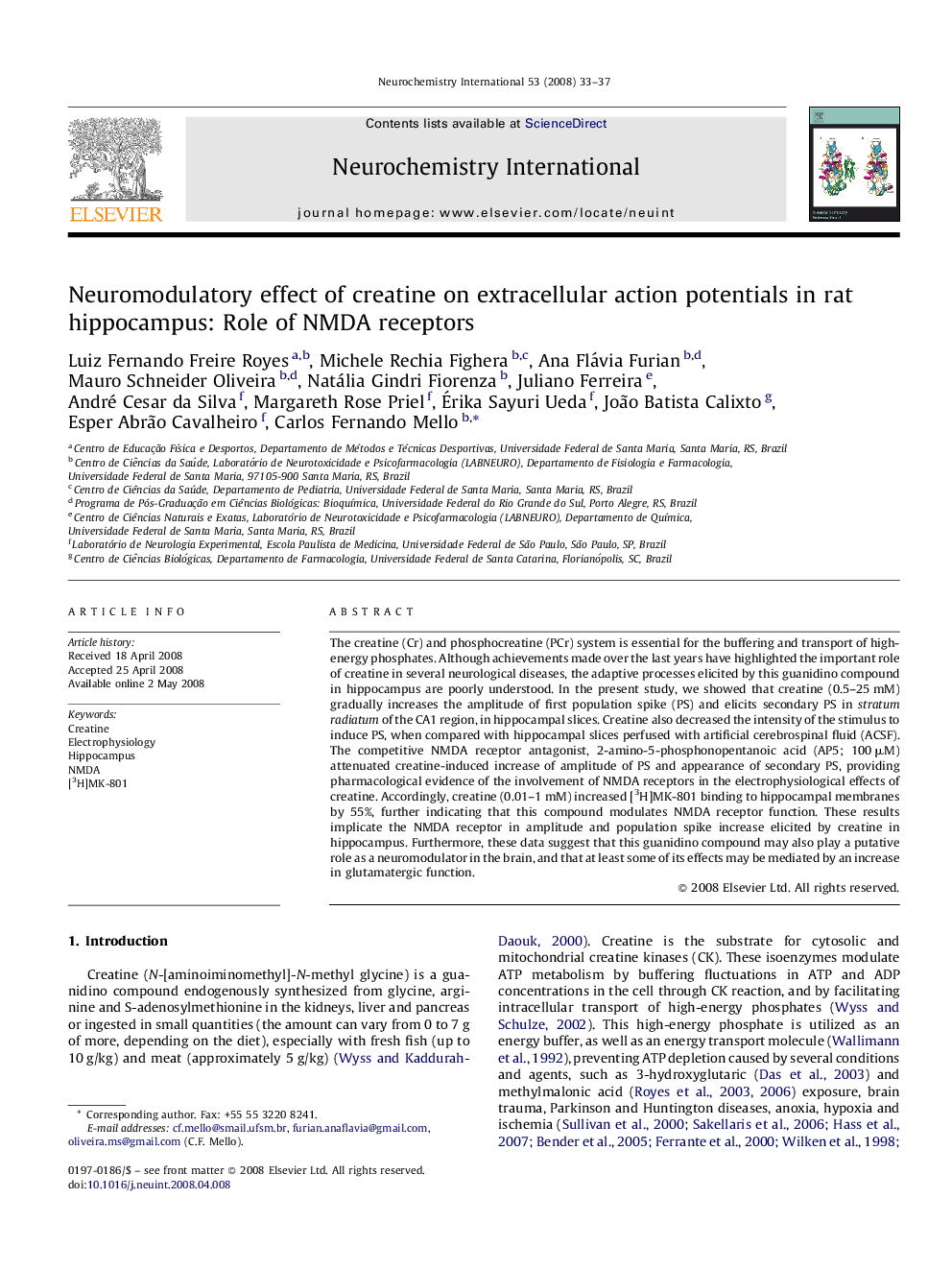| Article ID | Journal | Published Year | Pages | File Type |
|---|---|---|---|---|
| 2201671 | Neurochemistry International | 2008 | 5 Pages |
The creatine (Cr) and phosphocreatine (PCr) system is essential for the buffering and transport of high-energy phosphates. Although achievements made over the last years have highlighted the important role of creatine in several neurological diseases, the adaptive processes elicited by this guanidino compound in hippocampus are poorly understood. In the present study, we showed that creatine (0.5–25 mM) gradually increases the amplitude of first population spike (PS) and elicits secondary PS in stratum radiatum of the CA1 region, in hippocampal slices. Creatine also decreased the intensity of the stimulus to induce PS, when compared with hippocampal slices perfused with artificial cerebrospinal fluid (ACSF). The competitive NMDA receptor antagonist, 2-amino-5-phosphonopentanoic acid (AP5; 100 μM) attenuated creatine-induced increase of amplitude of PS and appearance of secondary PS, providing pharmacological evidence of the involvement of NMDA receptors in the electrophysiological effects of creatine. Accordingly, creatine (0.01–1 mM) increased [3H]MK-801 binding to hippocampal membranes by 55%, further indicating that this compound modulates NMDA receptor function. These results implicate the NMDA receptor in amplitude and population spike increase elicited by creatine in hippocampus. Furthermore, these data suggest that this guanidino compound may also play a putative role as a neuromodulator in the brain, and that at least some of its effects may be mediated by an increase in glutamatergic function.
